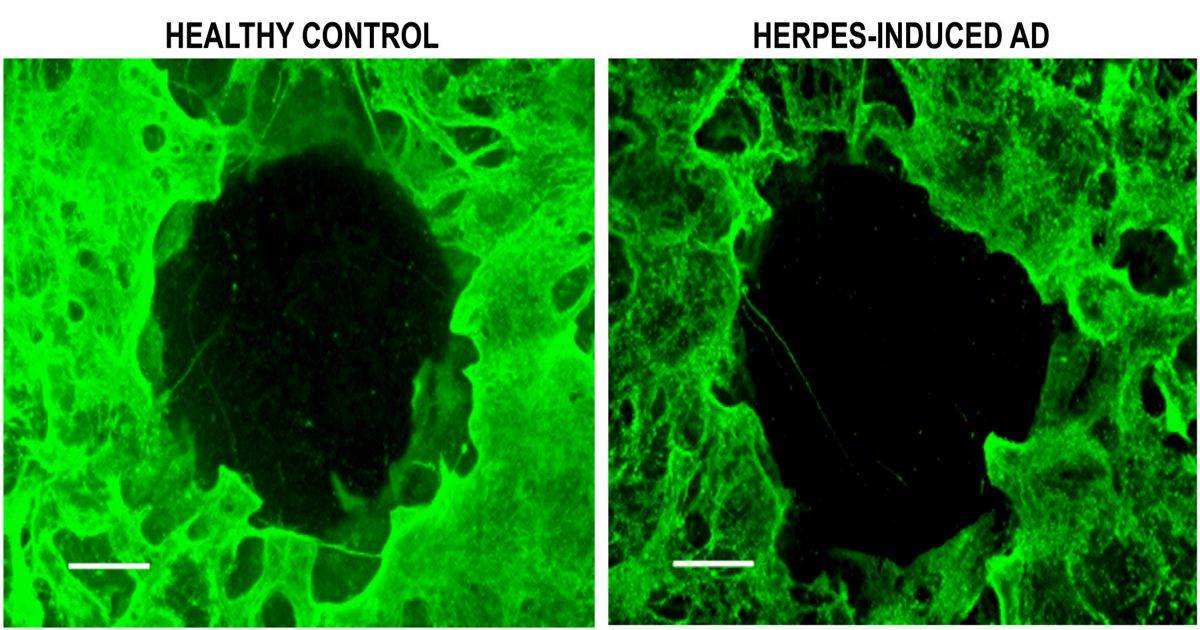Bioengineered brain model shows HSV-1 may be responsible for some cases of Alzheimer’s


Herpes simplex virus type 1 may be responsible for some cases of Alzheimer’s disease, or AD, according to a recently developed three-dimensional model of the human brain.
The bioengineered model of the brain, a herpes-induced tissue model of AD that simulates human disease with multicellular amyloid plaque-like formulations, may enable further studies that could identify drug targets for AD.
“Useful in vitro tissue models to study Alzheimer-related factors would provide routes to insight into cause and effect, underlying mechanisms and leads for drug design and targeting. The system here offers such insights and opportunities,” Dana Cairns, PhD, post-doctoral research associate at Tufts University, and David L. Kaplan, PhD, Stern Family Professor of Engineering at Tufts University, told Healio. “This is an accelerated model of this neurodegenerative disease. Many in vitro AD models require much longer culture and result in fewer AD-like phenotypes. Further, the upregulated markers identified in our screen are potentially the same genes involved in the early pathogenesis of AD.”
To study a potential link between HSV-1 and AD, Cairns, Kaplan and colleagues developed a brain-like tissue model using a method that produces human-induced neural stem cells (hiNSCs) that differentiate into brain cells over a period of 4 days. The model consisted of porous silk protein sponges that imitate gray matter and collagen gel that supports the growth of neuroextensions, which allowed researchers to measure neuron activity in real time.

Within 3 days of HSV-1 infection, the hiNSCs developed formations similar to the signature amyloid plagues common among patients with AD. The researchers also observed that antiviral medication reduced signs of AD — suggesting that some HSV-1 treatments could have potential applications in AD.
“Herpes virus exposure may warrant closer tracking of AD-related symptoms and further consideration for antiviral medications. Also, most sporadic AD begins after age 60 to 65,” Cairns and Kaplan said. “Importantly, shingles — a disease caused by the varicella-zoster virus, which is a member of the herpes group of viruses — is most common in people with a depressed immune system who are over the age of 50. The prevalence of these comorbidities in an aging population, in combination with our findings, suggests that this herpes-AD correlation is worth exploring further from a clinical standpoint.”
The researchers also noted that future research will explore genetic-based differences in AD susceptibility.
“Longer term cultures to assess phenotypic changes would add value to the utility of the system for widespread use in drug discovery studies,” Cairns and Kaplan said. “Future studies will involve generating human-induced neural stem cells from specific patients in order to understand potential differences in disease susceptibility based on genetic variability.” – by Eamon Dreisbach
Disclosures: Cairns and Kaplan report no relevant financial disclosures.
